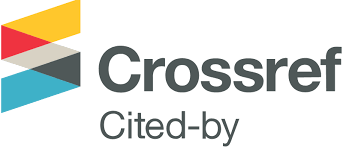The synthesis of spiro-2-oxindole-derivative imides of pyrrolidine-3,4-dicarboxylic acid with biogenous sulfur amino acid residues and their antihypoxic activity
DOI:
https://doi.org/10.24959/ophcj.17.914Keywords:
spiro[pyrrolidine-3, 2’-oxindole], multicomponent reactions, antihypoxic activity, bioelectric activity of the heartAbstract
Modification of the spiro-2-oxindole skeleton due to introduction of pharmacophores of the known biologically active substances is a productive way for searching and creating new biologically active molecules with the non-planar structure.
Aim. To synthesize spiro-2-oxindole derivatives of pyrrolidine-3,4-dicarboxylic acid imides with residues of biogenic sulfur-containing α-amino acids and study their anti-hypoxic activity.
Results and discussion. Using a three-component one-pot reaction of isatin with sulfur-containing α-amino acids and maleimides a number of new spiro-imides, including 4’-R4-5’-alkylthio-S-R3-spiro[1-R1-5-R5-3H-indole-3,2(1’H)-pyrrolo[3,4-c]pyrrole]-2,3’,5’(1H,2’aH,4’H)-triones 6a-s, was synthesized with the yields of 55-92 %. The structure and the composition of the compounds synthesized are consistent with the results of X-Ray, elemental analysis, mass and NMR-spectra. It was found that only two of the eight possible enantiomers of spiro-imides were formed. Spiro-imide with a methionine residue in the dose of 10 mg/kg was the most active, and increased the life expectancy in rats with respect to the control group by 33.7 % on average. Against the background of acute asphyxia the preventive administration of piro-imide with a methionine residue in the dose of 5 mg/kg was the most effective; it increased the duration of the bioelectric activity of the heart by 12.1 %.
Experimental part. The synthesis of compounds was performed using a three-component condensation in the alcoholic-aqueous medium. The methods of X-Ray, 1H, 13C NMR-spectroscopy, and mass spectrometry were used. The study of the antihypoxic activity was carried out on models of acute normobaric hypoxic hypoxia with hypercapnia and acute asphyxia in male rats of the Wistar line. The antihypoxic effect was assessed by the bioelectric activity of the heart.
Conclusions. An effective approach to the synthesis of 4’-R4-5’-alkylthio-S-R3-spiro[1-R1-5-R5-3H-indole- 3,2’(1’H)-pyrrolo[3,4-c]pyrrole]-2,3’,5’(1H,2’aH,4’H)-triones has been developed; among them a compound with a moderate antihypoxic activity has been found.
Downloads
References
- Ball–Jones, N. R., Badillo, J. J., Franz, A. K. (2012). Strategies for the enantioselective synthesis of spirooxindoles. Organic & Biomolecular Chemistry, 10 (27), 5165. doi: 10.1039/c2ob25184a.
- Murugan, R., Anbazhagan, S., Narayanan, S. S. (2010). Corrigendum to “Synthesis and in vivo antidiabetic activity of novel dispiropyrrolidines through [3+2] cycloaddition reactions with thiazolidinedione and rhodanine derivatives ” [European Journal of Medicinal Chemistry 44 3272–3279]. European Journal of Medicinal Chemistry, 45 (8), 3518–3518. doi: 10.1016/j.ejmech.2010.04.021.
- Maheswari, S. U., Balamurugan, K., Perumal, S., Yogeeswari, P., Sriram, D. (2010). A facile 1,3–dipolar cycloaddition of azomethine ylides to 2–arylidene–1,3–indanediones: Synthesis of dispiro–oxindolylpyrrolothiazoles and their antimycobacterial evaluation. Bioorganic & Medicinal Chemistry Letters, 20 (24), 7278–7282. doi: 10.1016/j.bmcl.2010.10.080.
- Moldvai, I., Gács–Baitz, E., Balázs, M., Incze, M., Szántay, C. (1996). Chemistry of Indoles Carrying a Basic Function, Part 31 Synthesis of Spiro[cyclopropane– 1,3’[3H]indol]–2’(1’H)–ones with Antihypoxic Effects. Archiv Der Pharmazie, 329 (12), 541–549. doi: 10.1002/ardp.19963291206.
- Ujházy, E., Dubovický, M., Ponechalová, V. et al (2008). Prenatal developmental toxicity study of the pyridolindole antioxidant SMe1EC2 in rats. Neuro Endocrinol Lett., 29, 639–643.
- Tsubanova, N. A., Strygo,l S. Yu., Redkin R. G.(2011). Klinichna Pharmatsia – Clinical Pharmacy, 15 (1), 56–60.
- Lipson, V. V., Borodina, V. V., Redkin, R. G. et al. (2016). Problemy endokrynnoi patolohii, 1, 56–62.
- Alvarez–Carreño, C., Becerra, A., Lazcano, A. (2013). Norvaline and Norleucine May Have Been More Abundant Protein Components during Early Stages of Cell Evolution. Origins of Life and Evolution of Biospheres, 43 (4–5), 363–375. doi: 10.1007/s11084–013–9344–3.
- Bigelow, D. J., Squier, T. C. (2011). Thioredoxin–dependent redox regulation of cellular signaling and stress response through reversible oxidation of methionines. Molecular BioSystems, 7 (7), 2101. doi: 10.1039/c1mb05081h.
- Effects of Aging on the Interaction Between Glutamate, Dopamine, and GABA in Striatum and Nucleus Accumbens of the Awake Rat. (2002). Journal of Neurochemistry, 73 (5), 2063–2072. doi: 10.1046/j.1471–4159.1999.02063.x.
- Anselm, L., Banner, D. W., Benz, J., Groebke Zbinden, K., Himber, J., Hilpert, H., Haap, W. (2010). Discovery of a factor Xa inhibitor (3R,4R)–1–(2,2– difluoro–ethyl)–pyrrolidine–3,4–dicarboxylic acid 3–[(5–chloro–pyridin–2–yl)–amide] 4–{[2–fluoro–4–(2–oxo–2H–pyridin–1–yl)–phenyl]–amide} as a clinical candidate. Bioorganic & Medicinal Chemistry Letters, 20 (17), 5313–5319. doi: 10.1016/j.bmcl.2010.06.126.
- Pavlovska, T. L., Redkin, R. G., Lipson, V. V., Atamanuk, D. V. (2015). Molecular diversity of spirooxindoles. Synthesis and biological activity. Molecular Diversity, 20 (1), 299–344. doi: 10.1007/s11030–015–9629–8.
- Pavlovskaya, T. L., Redkin, R. G., Yaremenko, F. G. et al. (2013). Synthesis and chemical properties of new derivatives of 3a,6a–dihydro–2H–spiro– [indole–3,1–pyrrolo[3,4–c]pyrrole]–2,4,6(1H,3H,5H)trione. Chem Heterocycl Comp., 49 (6), 882–896. doi: 10.1007/s10593–013–1322–1.
- Liu, Z.–Q. (2015). Two Neglected Multicomponent Reactions: Asinger and Groebke Reaction for Constructing Thiazolines and Imidazolines. Current Organic Synthesis, 12 (1), 20–60. doi: 10.2174/1570179411999141112144441.
- Zefirov, Yu. V. (1997). Kristallographiia – Crystallography Reports, 42 (5), 936–958.
- Arome, D., Chinedu, E. (2013). The importance of toxicity testing. Pharm. Bio Sci., 4, 146–148.
- Sheldrick, G. M. (2008). A short history of SHELX. Acta Crystallographica. Section A, 64, 112–122.
- Rumyantseva, S. A., Fedin, A. I., Sokhova, O. N. (2012). Antioxidant Treatment of Ischemic Brain Lesions. Neuroscience and Behavioral Physiology, 42 (8), 842–845. doi: 10.1007/s11055–012–9646–3.
Downloads
Published
How to Cite
Issue
Section
License
Copyright (c) 2017 National University of Pharmacy

This work is licensed under a Creative Commons Attribution 4.0 International License.
Authors publishing their works in the Journal of Organic and Pharmaceutical Chemistry agree with the following terms:
1. Authors retain copyright and grant the journal the right of the first publication of the work under Creative Commons Attribution License allowing everyone to distribute and re-use the published material if proper citation of the original publication is given.
2. Authors are able to enter into separate, additional contractual arrangements for the non-exclusive distribution of the journal’s published version of the work (e.g., post it to an institutional repository or publish it in a book) providing proper citation of the original publication.
3. Authors are permitted and encouraged to post their work online (e.g. in institutional repositories or on authors’ personal websites) prior to and during the submission process, as it can lead to productive exchanges, as well as earlier and greater citation of published work (see The Effect of Open Access).














